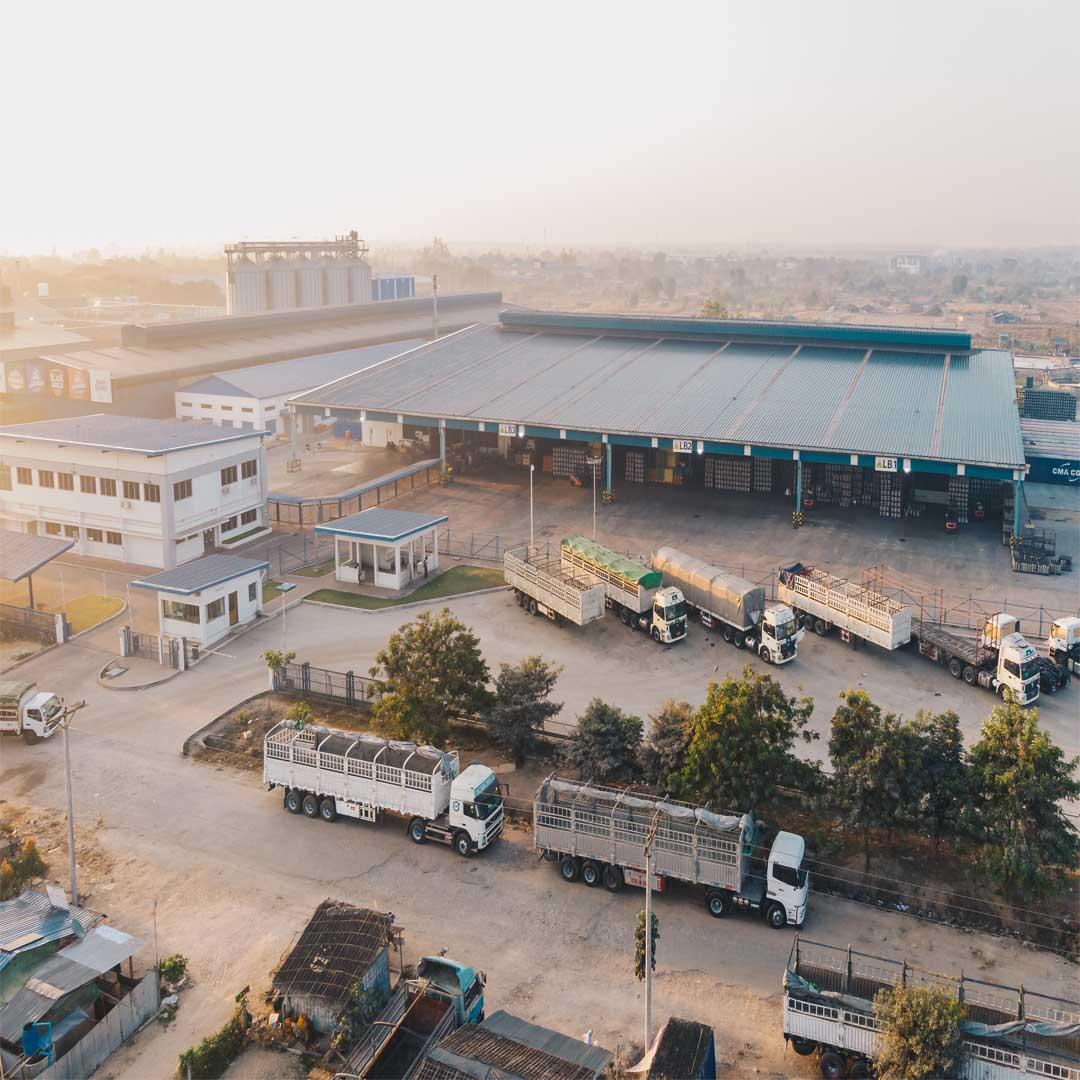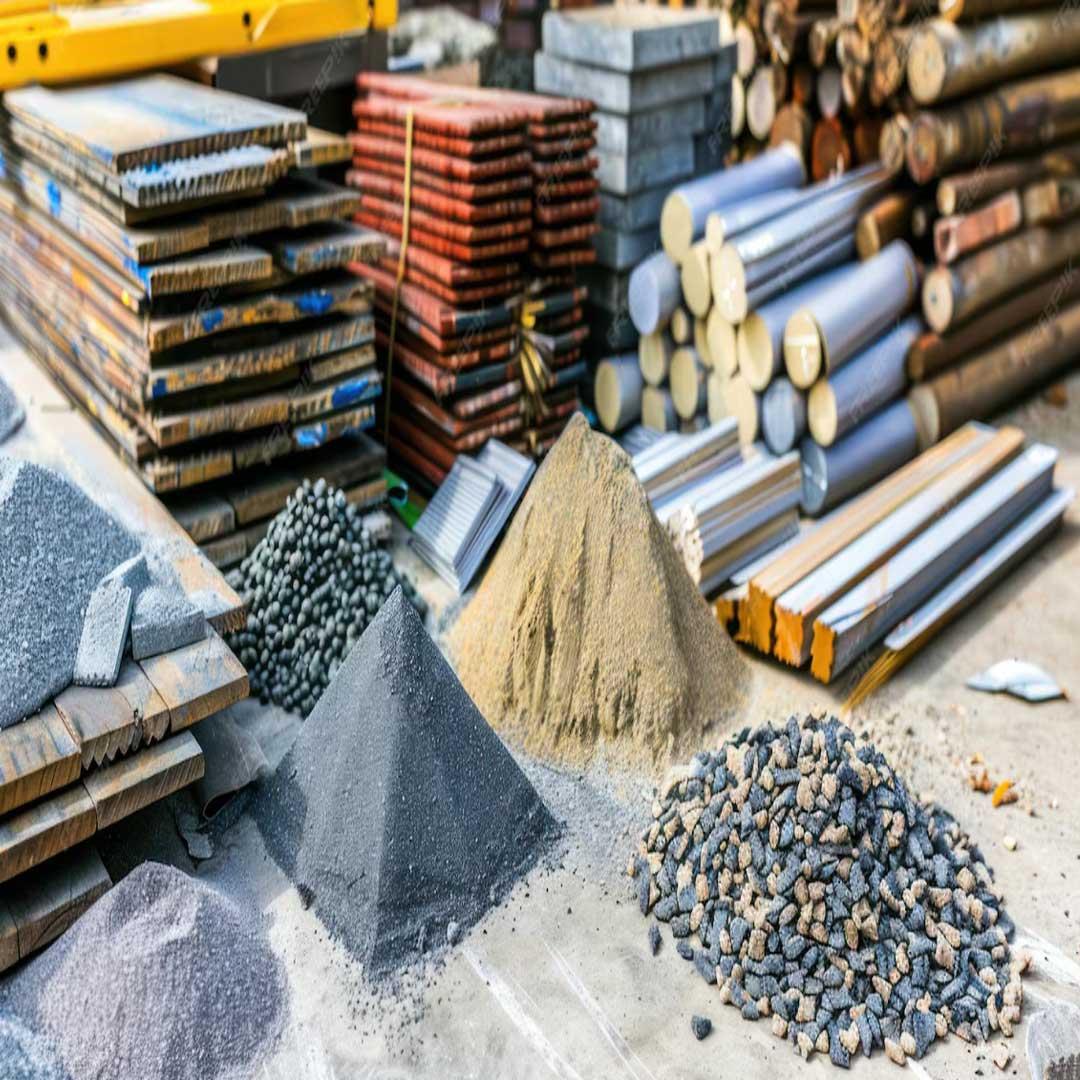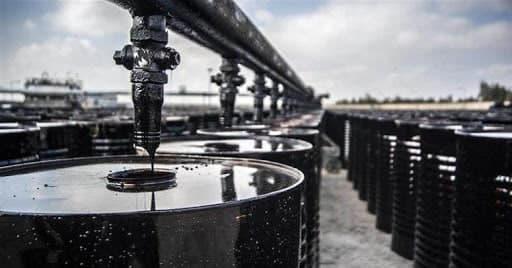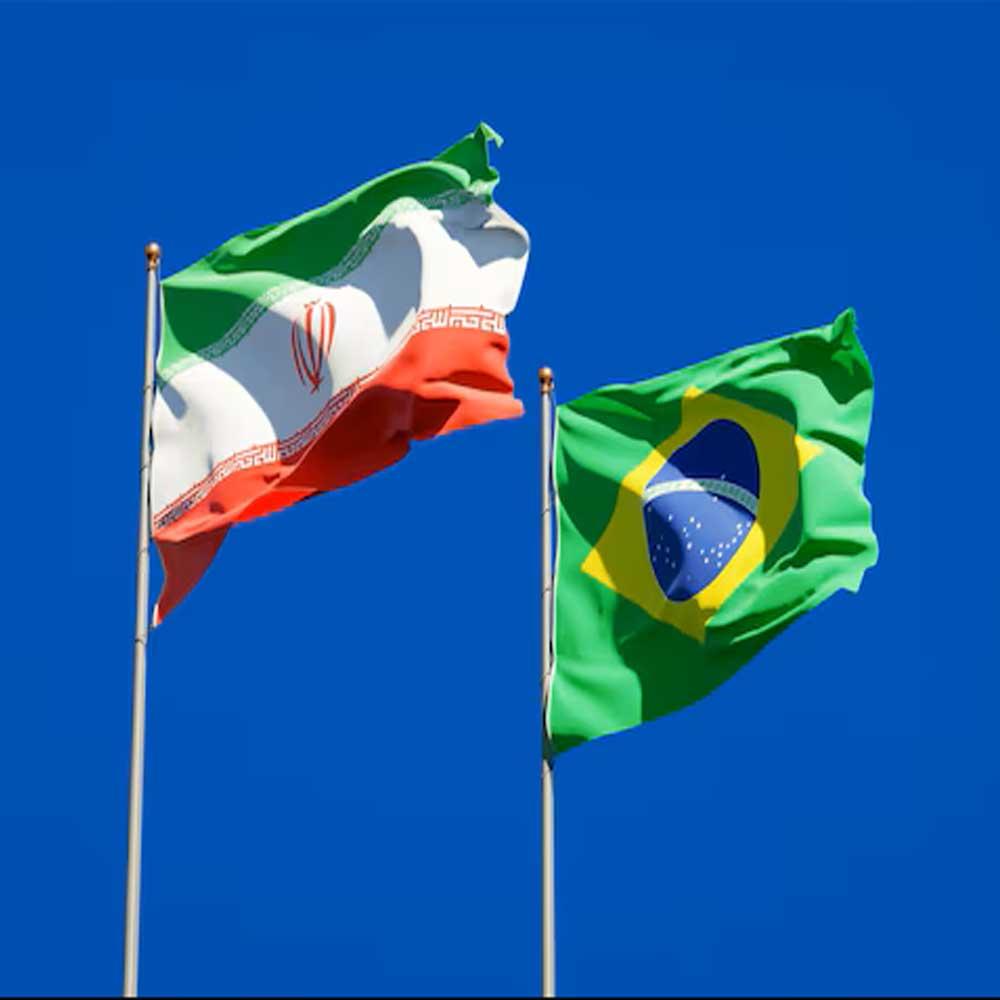Iran exports a wide range of building materials to Iraq, including cement, tiles, stone, and steel. The Abrisham Road B2...
Iran Sanctions: Smart Export Alternatives for 2025
Have you ever wondered how Iranian exporters keep trading even under tough sanctions?
It might sound impossible, banks are restricted, payments get delayed, and global trade routes seem blocked. Yet, every year, Iran’s non-oil exports keep rising, finding creative paths to reach international markets.
Sanctions, while challenging, have also forced Iranian businesses to become more flexible, digital, and region-focused. Instead of giving up, many exporters have turned to smart export alternatives, from regional trade networks and barter systems to B2B digital platforms like Abrisham Road.
In this article from AbrishamRoad, we’ll explore together:
- What real impact sanctions have on Iranian exports,
- Which alternative export routes are now thriving in 2025.
- And how digital trade platforms are reshaping Iran’s B2B landscape.
Because when one door closes in global trade smart exporters always find another way to open it.
Understanding the Impact of Sanctions on Iranian Exporters
What exactly do sanctions change for Iranian exporters? It’s not only about blocked bank accounts, it’s about confidence, speed, and access. When sanctions tighten, businesses face three key barriers that affect every trade transaction.
Challenge | Impact on Exporters | Example |
|---|---|---|
Financial Restrictions | Delayed or frozen international payments | Harder to receive USD/EUR transfers |
Logistics & Shipping | Limited access to major global ports | Extra costs via Oman or Turkey |
Market Trust | Buyers hesitate to sign long-term contracts | Preference for local or “neutral” suppliers |
These issues push many Iranian businesses to rethink their trade strategies. And surprisingly, this pressure has created innovation: companies started building regional export partnerships, using local currencies, and joining digital B2B platforms like Abrisham Road to connect directly with foreign buyers.
In short: sanctions slowed down traditional exports, but accelerated smarter ones.
Smart Alternatives: New Export Routes & Partner Countries
When traditional trade routes face barriers, innovation becomes survival. Iranian exporters have already proven this, by finding smarter, faster, and regionally aligned export alternatives that bypass sanctions while keeping business alive.
Let’s look at the top strategies shaping Iran’s export network in 2025:
Regional Trade Corridors – “Closer is Smarter”
Instead of relying on distant European ports, exporters now focus on shorter, sanction-free routes.
Top alternative routes:
- Iran–Oman–India Corridor → stable shipping via Muscat to Mumbai.
- Iran–Turkey–Europe Transit → use Turkish intermediaries for EU access.
- Iran–Russia–Eurasia Route → growing demand for Iranian food & polymers in CIS markets.
- Iran–Pakistan–China Link → expansion through Gwadar and Belt & Road projects.
Route | Main Products | Growth (YoY) |
|---|---|---|
Iran–Oman–India | Petrochemicals, Dates, Honey | +18% |
Iran–Turkey–EU | Food, Medical Equipment | +22% |
Iran–Russia | Polymer, Grain | +25% |
Local Currency Settlements & Barter Trade
When banking channels are blocked, smart exporters go cashless but creative. Instead of waiting for USD, they use:
- National currencies (Rial–Ruble–Lira–Dirham)
- Barter deals: e.g. exchanging pistachios for machinery or polymer for rice
- Crypto settlements in limited, compliant networks
These models help businesses stay liquid without violating international laws.
Digital B2B Platforms like Abrisham Road
Perhaps the most powerful shift has been digitization. Platforms like Abrisham Road act as a bridge between Iranian suppliers and foreign buyers, offering:
- Verified supplier listings
- Product catalogs with real-time inquiry
- Secure communication and contract facilitation
Instead of waiting for a trade fair or government deal, a small exporter can now reach Qatar, Turkey, or Russia directly — all online.
“In sanctions, opportunity hides behind innovation, and Iran’s exporters are learning to see it.”
Case Studies: Iranian Companies Adapting to Sanctions
Sanctions are never just theory, they test real businesses. Here are three real examples (based on aggregated export trends) showing how Iranian companies reinvented themselves instead of waiting for sanctions to end.
Case 1: A Saffron Exporter from Mashhad Finds a New Route
When European banks stopped clearing payments, this company switched to the Oman–India corridor through Muscat Free Zone. They began trading in dirhams and signed contracts directly via the Abrisham Road B2B Platform.
Result:
- Export volume up 📈 by 19 %
- Payment delays reduced from 45 days → 10 days
- Expanded buyers in India & Malaysia
“We stopped waiting for permission, and started finding partners.”
Case 2: A Polymer Supplier Leveraging Barter Trade
A Tehran-based polymer supplier couldn’t receive payments from Eastern Europe. Instead of halting production, they bartered polymer pellets for agricultural machinery through a Turkish broker.
Smart move:
- Maintained cash flow without USD transactions
- Reduced currency risk
- Built long-term trust with foreign partners
Case 3: A Food Company Going Digital with Abrisham Road
This Iranian food manufacturer joined AbrishamRoad in 2024. Through digital exposure, they reached buyers in Qatar and Kuwait who were previously inaccessible.
Before | After Joining Abrisham Road |
|---|---|
Only 2 foreign clients | 9 active buyers across 4 countries |
Manual emails & fax | Online quotations & contracts |
0 digital presence | Verified B2B profile & SEO visibility |
Result: Over 30 % growth in export leads within six months.
Key Takeaway
Adaptation is the new advantage. These companies didn’t just survive sanctions, they used them as a reason to modernize, digitize, and regionalize. And platforms like AbrishamRoad make that transformation scalable, turning isolation into connection.
Future Outlook: How Digital Trade Will Redefine Export from Iran
If the past few years have been about surviving sanctions, the next few will be about thriving beyond them. Iran’s exporters are entering a new era, one defined not by restrictions, but by digital trade, regional collaboration, and data-driven strategy.
1. Digital Platforms Become Export Gateways
Traditional trade fairs and paper contracts are fading. Instead, verified B2B platforms like Abrisham Road act as the virtual Silk Road, where exporters showcase products, negotiate safely, and close deals in real time.
Expected Impact by 2026
Aspect | 2023 (Old System) | 2026 (Digital Export) |
|---|---|---|
Time to find a buyer | 3–6 months | 2–4 weeks |
Cost per lead | High (trade fairs, travel) | Low (digital inquiries) |
Export visibility | Local & limited | Global & scalable |
2. Regional Economies Form the New Trade Backbone
Sanctions forced Iran to look closer, not farther.
Countries like Oman, Qatar, Turkey, Russia, and Pakistan are becoming strategic partners in building regional export corridors, faster, cheaper, and politically neutral.
The “new Silk Road” is not a single road anymore, it’s a web of digital and regional links powered by trust and data.
3. Smart Exporters Use Data, Not Guesswork
With tools like AI-based market analysis, real-time price tracking, and logistics intelligence, Iranian exporters can now plan routes and prices based on facts, not uncertainty.
Platforms like Abrisham Road will soon integrate AI-powered matching, connecting buyers and sellers through behavior and trade data.
Data is the new oil and Iran’s exporters are learning to refine it digitally.
Iran’s exporters have already proved resilience. Now it’s time to combine that resilience with innovation and digital connection.
If you’re an Iranian manufacturer or exporter looking for global buyers, join Abrisham Road . Let’s build together the next generation of trade, smarter, faster, and beyond sanctions.
Final Conclusion: Turning Sanctions into Smart Opportunities
Sanctions were meant to isolate Iranian exporters, but they’ve done the opposite. They’ve forced innovation, expanded regional trade, and accelerated digital transformation. What once looked like limitation has now become the foundation for a smarter export economy.
Across 2025 and beyond, the exporters who will thrive are those who:
- Use alternative export routes through trusted regional partners,
- Embrace local currency and barter systems to stay liquid,
- And rely on digital B2B platforms like Abrisham Road to connect directly with verified international buyers.
This is not just about surviving sanctions، it’s about redefining Iran’s place in global trade. AbrishamRoad stands as part of this transformation: a bridge linking Iranian suppliers to the world, one smart connection at a time.
The Silk Road once carried goods across continents. Today, AbrishamRoad carries opportunities across data, trust, and technology.
Frequently Asked Questions Of Iran sanctions export alternatives
Can Iranian companies still export products under sanctions?
Yes, absolutely. While sanctions limit certain transactions, non-oil exports like agricultural, petrochemical, and food products continue through regional trade routes (Turkey, Oman, Russia) and B2B platforms such as Abrisham Road.
With proper documentation and partner selection, exports remain legal and active.
What are the best export alternatives for Iranian traders in 2025?
The most effective alternatives include:
- Barter trade (exchange of goods without hard currency),
- Local currency settlements (Rial, Ruble, Dirham),
- And regional B2B export networks through trusted partners.
How does Abrisham Road help exporters under sanctions?
AbrishamRoad connects verified Iranian suppliers with global buyers through a digital B2B platform, reducing dependency on traditional banks and middlemen.
It offers product listings, secure messaging, and trade support to simplify international deals even under sanctions.
Which countries are most open to Iranian exports right now?
According to 2025 trade data, Oman, Turkey, Russia, Pakistan, and Qatar are the top importers of Iranian goods.
They provide neutral trade channels and simplified logistics for Iranian exporters.
Is barter trade (goods-for-goods) a sustainable export model for Iran?
Yes, when combined with digital tracking and transparent contracts, barter can be a sustainable method.
It reduces dependency on volatile foreign currencies and keeps trade active even during strict sanctions.




